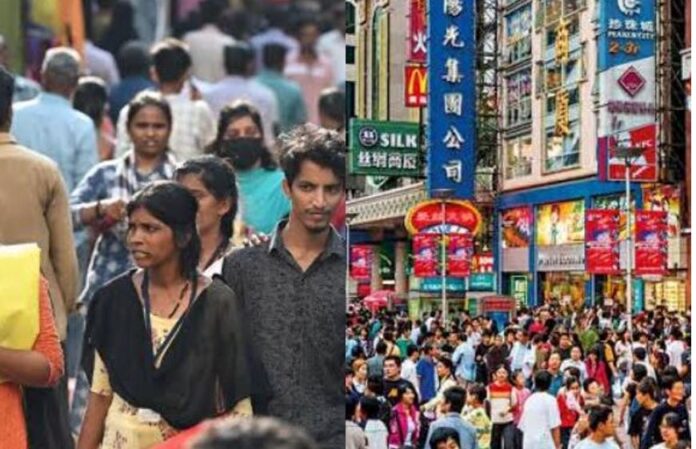India surpasses China, Nigeria retains African top spot
By Jeph Ajobaju, Chief Copy Editor
Nigeria still retains its position as the most populous country in Africa with 200 million people, but elsewhere at the weekend India (1.425 billion) overtook China (1.412 billion) as the world’s most populous nation, according to Guinness World Records (GWR).
GWR quoted the United Nations’ Population Division (UNDP) as confirming the population of India is now estimated at 1,425,775,850.
GWR explained in a statement China’s population peaked at 1.426 billion in 2022 and then dropped to make way for India to officially hold the world record.
“China had held the record ever since the UN started keeping track of population sizes around the globe in the 1950s,” GWR said, per Tribune.
“Surprisingly, India has overtaken China despite being almost THREE TIMES smaller.
“India has an area of 3.287 million sq km (1.269 m sq mi), while China covers a whopping 9.597 m sq km (4 m sq mi).”
GWR added China, the largest country in Asia and fourth largest in the world, is only slightly smaller in land mass than the United States.
India by land mass is the seventh largest country in the world.
__________________________________________________________________
Related articles:
Global population now 8b; India to surpass China next year. Nigeria leads African growth
Buhari preaches control as Nigeria’s population skyrockets
Obasanjo warns of consequences of rising population
__________________________________________________________________
India to overtake China in population race in a matter of days, says UNPD
UNPD Population Division Director John Wilmoth had announced in April that India was on the cusp of surpassing China as the world’s most populous country in a matter of days.
He explained at UN headquarters in New York the main driver of this trend is the fertility level in the two nations, stressing China and India’s combined population is more than one third of the world’s eight billion citizens.
“By the end of April, India’s population is expected to reach 1,425,775,850 people, with projections indicating further growth for several decades more. That’s slightly higher than China’s global record of 1.4 billion in 2022.
“China’s population reached its peak size in 2022 and has begun to decline. Projections indicate that the size of the Chinese population could drop below one billion before the end of the century,” Wilmoth said.
With nearly identical levels of fertility in 1971, just under six births per woman, the countries have charted their population path into the 21st century, according to the UN Department of Economic and Social Affairs (DESA).
By the end of the 1970s, fertility rate in China fell by half, to three births per woman. It took India more than three decades for its fertility rate to reach that level.
“During the second half of the twentieth century, both countries made concerted efforts to curb rapid population growth through policies that targeted fertility levels.
“These policies, together with investments in human capital and gender equality, contributed to China’s plummeting fertility rate in the 1970s and to the more gradual declines that followed in the 1980s and 1990s,” DESA said.
Fertility rates
China had one of the world’s lowest fertility rates by 2022, which was 1.2 births per woman on average over a lifetime, according to the UN World Population Prospects 2022 report.
In the 1980s, China implemented “one child policy” that limited families to one child each, which ended in 2016.
India’s current fertility rate – two births per woman – is just below the replacement threshold of 2.1, the level required for population stabilisation in the long run in the absence of migration, says the UN report.
“The crossover reminds us that the number of older persons is growing rapidly,” Wilmoth explained.
The number of persons aged 65 or over is expected to nearly double in China between 2023 and 2015, and to more than double in India, he added.
“These trends call attention to the challenges of providing social support and protection to growing numbers of older persons.
“Now is the time to think for the long term and to promote greater solidarity within societies and between generations.
“Central to this long-term planning are efforts to combat climate change.”
Wilmoth said it is essential that increasing numbers of people and increasing incomes per capita in China, in India, and throughout the world do not undermine efforts to move towards more sustainable consumption and production.
To mitigate the most severe impacts of climate change, he said all countries must urgently move away from over-dependence on fossil fuel energy.




